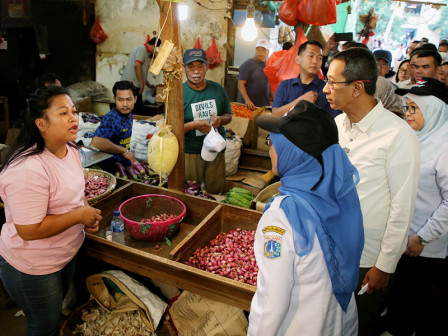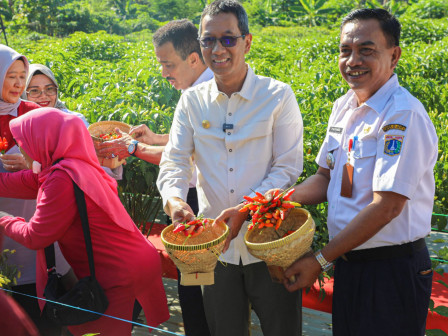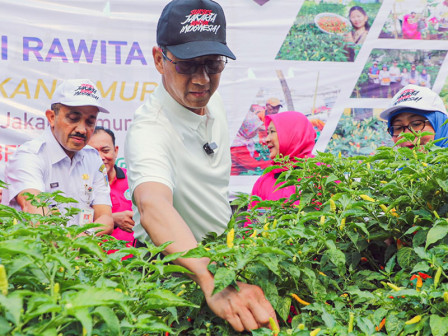Katokkon Chili Cultivation in Seribu Islands Intensified
Reported by Anita Karyati | Translated by Nugroho Adibrata
The Seribu Islands Maritime, Agriculture and Food Security Sub-agency (KPKP) keeps prompting residents to cultivate Katokkon chilies independently or join agricultural groups.
Its prices are also relatively more stable
Seribu Islands KPKP Sub-agency's Food Security Section Head, Parsan said Katokkon chili is a variety from Tana Toraja, South Sulawesi.
"It is characterized by a very spicy taste compared to ordinary cayenne peppers and have a fragrant aroma. Its prices are also relatively more stable," he expressed, Wednesday (1/10).
Acting Governor and Forkopimda Intensify Urban FarmingHe explained the Katokkon chili cultivation in Seribu Islands is one of the activities made by Ishak, a resident of Lancang Island, Pari Island Urban Village.
"The planting method is the same as for cayenne pepper in general. Earlier, we managed to harvest four kilograms of chilies from 12 potted trees. It should be used as an example," he explained.
According to him, efforts to push chili cultivation are in accordance with the Jakarta Acting Governor's directions. The reason is, chili is a commodity that has an influence on inflation.
"We're prompting farmer groups, urban farming activists, and the public to plant chilies, at least in pots," he explained.
If the Seribu Islands people developed their own chili plants, the supply of chilies would no longer depend on sources from outside the area and the price of chilies could be more stable.
"We'll keep providing guidance and encourage residents to continue growing chilies, at least one house has one polybag of chili plants," he hoped.
Urban farming activist from Grape Farming Group, Lancang Island, Pari Island Urban Village, Ishak admitted that Katokkon chili cultivation has been ongoing within the last six months.
"Of the 12 pots of planting media, the results were all quite good," he uttered.
In order for chili plants to grow well, they must be cared for regularly, including providing nutrition.
"Thank God, I have succeeded in harvesting three times. While this is not yet for commercial purposes, it is still limited to personal needs and distributed to neighbors," he admitted.




